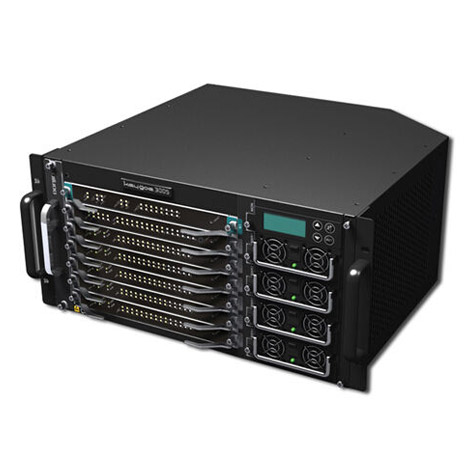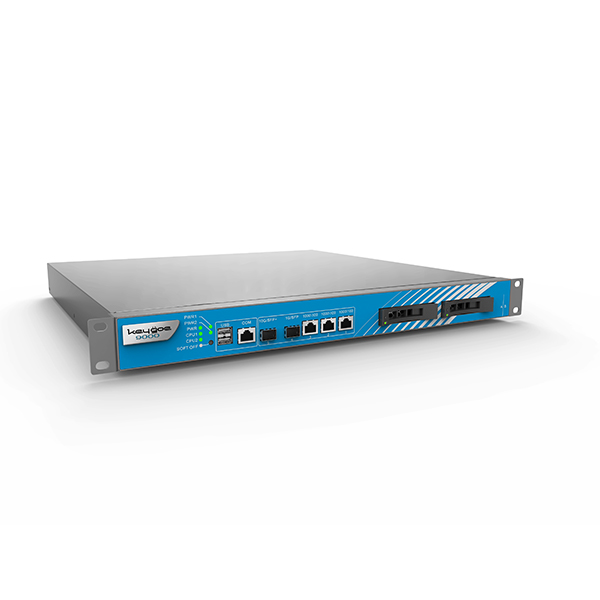Solutions for Small and Medium Enterprises
Source:DONJIN Date:2016-06-23 Click: Second
1. Overview
With the accelerated marketization process in recent years, small and medium enterprises in our nation have acquired rapid growth accordingly. By the end of 2005, our nation has seen the emergence of over 11 million small and medium enterprises, accounting for 99% of total number of enterprises nationwide. The annual sales revenue and profits of such enterprises have accounted for 57% and 40% of our GDP respectively. As a result, small and medium enterprises have been playing an increasingly critical role in facilitating economic growth, creating job opportunities and optimizing industrial structures.
Most of small and medium enterprises are operating in those industries of comparatively sufficient market competitions, where there are not only intense competitions, but also fast changes on the market. The ruthless market environment would therefore, require such enterprises to be bestowed with lower operation costs, flexible management measures and quick market response capabilities. Particularly, small and medium enterprises would more need to rely on their creation to make the timely adjustments of their own product forms, business modes, organizational structures and service methods along with the intensification of economic globalization and in face of the internationalized competition patterns, so as to adapt to the fast changing market and gain competitive edges.
Following the development of computer and communication technologies, the applications of such new technologies have been infiltrated into various sectors of corporate businesses, and have created the growingly important effects on the optimization of business processes and improvement of business intelligence.
2. Current state and problems of communication systems for SME
Communication systems of small and medium enterprises are usually interconnected with public telecommunication networks through the traditional PBX switches. An enterprise of this type would generally have a number of less than 1000 telephone terminals, and those with less than 400 telephone terminals would occupy a sizable share of total number of such enterprises. Due to the development of communication technologies and changes in the market environment, however, traditional communication systems have become inadaptable to the current needs of development of these small and medium enterprises.
Typical of singular functions and closed technical architecture, the traditional PBX switch can simply accomplish the simplex voice switching function with inferior system extension capability and difficult upgrading, so that enterprises can hardly realize such business applications as call transfer, telephone conference and voice mail on their existing platforms. In the meantime, as traditional switches would work in the switched telephone networks, an enterprise tends to build up a set of data exchange networks separately at the time of construction of telephone networks, so as to achieve the data applications. Due to the differences in communication protocols between telephone network and data network, it is often hard for enterprises to integrate the system resources of these two networks, thus resulting in the insufficient coordination of corporate businesses. Moreover, as a traditional switch lacks simple and efficient monitoring tools, enterprises would lose control of their communication resources as a result, thus leading to the rise in their operation costs ( e.g. Communication costs and manpower costs, etc)
3. Requirements of Communication Systems for SME
Continuous aggravation of market competitions has kindled the increasing emphasis of small and medium enterprises on the unique role of basic communication networks in their businesses, where these enterprises have been never contented with the construction of a set of telephone call systems of singular functions, but have become inclined to locate their corporate communication systems at a kind of service bearing system that can increase their business capabilities and customer service level, thereby enhancing their competitiveness. Consequently, requirements of small and medium enterprises for their communication systems have become somewhat different from those in the past.
First, corporate communicaton systems need to have stronger stability and reliability. As a communication system can bear the information flow of an enterprise, the unsmoothed information exchange and communication would often give rise to the loss of some of its market opportunities. In this era while fast fishes swallow the slower ones, even one-minute delay would lead to a drop behind the competitors, while the cruelty of competition would make it very hard for small and medium enterprises to assume the risk of loss of market opportunities. Therefore, enterprises tend to have the extremely high requirements for the stability and reliability of their communication systems, i.e. continuous operation for 7×24 hours, while the shutdown of communication system for any critical business operation shall last no more than 0.2 hours within one year. In one word, only the steady operation can guarantee the continuousness and effectiveness of corporate business operations.
Next, communication systems shall be able to provide the merged business methods for enterprises. As IP and mobile communication technologies develop, there has been a great popularity of Internet and mobile communication networks nowadays, so that a lot of applications based on Internet and mobile communication networks such as e-mail, IP, SMS and WAP have become the major means of information communication for people and these applications have been similarly incorporated into the corporate business processes. Meanwhile, telephone conference, voice mail, intelligent fax and call transfer have been gradually employed by enterprises, while all such business methods have played a critical role in each of information communication, business development and customer service. Nevertheless, all these applications would work on different platforms with neither interoperability, nor common interface between each other, as a result of their different communication protocols.
Such sporadic applications have resulted in the disruption of corporate business processes, thus influencing the integrity and fluency of businesses. As such, small and medium enterprises would require a communication system that can unify the abovementioned applications to provide the unified resource transfer and management mechanism on the same one operation platform, where various communication means can be flexibly embedded into the corporate business processes. In this way, a customer centered, business-oriented operation mechanism can be formed for enterprises.
Thirdly, communication systems need to provide the perfect business management and monitoring tools for enterprises. Now, most of small and medium enterprises are at a stage of burgeoning development. In concomitance with such development, the product forms, business modes, and organizational structures of these enterprises are all undergoing constant changes and adjustments such as serialization of products, increase of branches and subsidiaries and optimization of human resources. The continuous expansion of business scale has increasingly demonstrated the weakness of their business monitoring and management, whereas the scale of these enterprises is relatively smaller and a major part of their capitals have been invested in the business development and expansion. So, it is impossible for them to set up any special monitoring system by which to carry out the effective management and surveillance over organizations, personnel, messages and expenses, causing the enterprises to lose control of their businesses and leading to the enlargement of operation costs. Therefore, small and medium enterprises would require the communication system that can provide the effective business monitoring and management such as the corporate call management (e.g. call volume, time, time length, contents and charges), fax management (e.g. approval, filing, preservation), and localized management of systems at different places, thereby increasing the operation efficiency and reducing the operation costs in such enterprises.
4. Donjin Communication System Solutions for SME
In relevance to the business needs of small and medium enterprises, Shenzhen Donjin Technologies Co., Ltd has utilized the technical accumulation of Donjin Tech in voice switching and media processing to put forward a set of communication system solutions for small and medium enterprises, where the system can be based on an unified operation platform to not only provide the highly reliable, highly stable voice switching, but also integrate abundant business applications and tools, such as telephone conference, fax management, call center, voice mail, call transfer and intelligent routing, to satisfy the needs of efficient operation of enterprises.
The Donjin Corporate Communication System Consists of three parts: service, management and application.
①. Service
Service refers to the aggregation of various voice and data resources operating in the Donjin corporate communication system, mainly including: voice switching resource, conference resource, fax resource, voice recording resource and media processing resource, etc.
The voice switching resource can accomplish the voice switching between speech channels to render the voice transfer between internal and external lines, and between internal lines, and provide support to call transfer and office direction routing.
This resource can be accessed with both digital trunk and analog trunk to support the SS7, SS1 and ISDN signals.
The fax resource can accomplish the format conversion of faxes, detection of fax signals, and automatic sending/receiving & saving of faxes in batches to provide support to the fax-based business applications.
The conference resource can provide a maximum conference of 512 parties, where the conference parties can be either from telephone network users, or from Internet users, thereby providing support to telephone conferences, call centers and web-based voice applications of enterprises.
The voice recording resource can realize the real-time recording of phone calls to provide support to corporate monitoring of businesses.
The media processing resource can realize such functions as IP voice, voice recognition, TTS, background sound effects and voice modification.
② Management
The Donjin corporate communication system can depend on computer terminals and telephones to configure the resources in the whole communication system, thus not only achieving the local configurations, but also realizing the remote settings at different places. Its currently available management functions include flow edition, operation control, resource monitoring and system maintenance.
The flow edition function can utilize the graphic methods to realize the business flow designs of an enterprise, such as the call center flow, fax sending and receiving flow, corporate outbound call flow and voice mail flow, etc.
The graphic design interface can realize the simple and highly efficient business flow designs and can make flexible adjustments of such designs in accordance with the changes in business operations.
The operation control function can accomplish the open/close of various services, where the system administrations can base on the business needs to open or close services instantly or on time to implement the optimization and control of system resources, e.g. the lock-up of long distance call function, disabling of special numbers, telephone conference function control and so on.
The resource monitoring function can offer the intuitionistic graphic displays of current state of system operation, including system load, module state, port status and signal flows, and can set up alerts for critical incidents.
The system can provide monitoring functions in the front panel to carry out the remote real-time monitoring of status of system operation and reduce the maintenance costs.
The system maintenance function refers to the backup and restoration of various business parameters. This function can back up business data into different directories and storage media, while restoring such data into the system as well.
For any critical operation influencing the system running state, the system can create an alert message describing the result of such operation. The maintainable parameters include various system data, local data, user data, billing data and so on.
③ Application
The Donjin corporate communication system can provide the mainstream business applications, so that users do not need to carry out the dedicated business development, but rather, can accomplish some simple settings to realize such businesses as call center, telephone conference, voice mail and fax management, so as to meet with the essential business requirements of enterprises and facilitate the rapid deployment of their businesses.
The call center function can provide such application services as ACD or CTI servers, telephone call recording and monitoring, IVR and database, etc. The telephone conference function can realize a maximum conference of 512 parties, while providing such functions as conference application, conference launch, conference schedule and conference recording, etc, The voice mail function can realize such functions as voice message, message listening and user management. The fax management function can realize such functions as the automatic sending and receiving, automatic distribution, resending and detection of batch faxes.
-
Keygoe1001-PCS1UF2
 DONJIN Keygoe1001-PCS1UF2 multi-media switch is a multimedia communication platform for 1 to 240 line applications in telecom value-added services, call center and enterprise communication for small and medium-sized enterprises. In a 1U chassis, it provides a maximum of 240-channel circuit switching, and each channel can be configured to one voice resource; thus, it can provide a maximum of 120 VoIP resources, 30 fax resources, 128 conferences, 16 SS7 links (64 kbps), 2 SS7 links (2 Mbps), and 4 SS7 links (2 Mbps in a high-impedance monitoring mode). This device has the features of nice integrity, comprehensiveness, simplicity, and flexibility, which is convenient for users to construct a highly efficient, easily deployed and maintained service system of high performance.More
DONJIN Keygoe1001-PCS1UF2 multi-media switch is a multimedia communication platform for 1 to 240 line applications in telecom value-added services, call center and enterprise communication for small and medium-sized enterprises. In a 1U chassis, it provides a maximum of 240-channel circuit switching, and each channel can be configured to one voice resource; thus, it can provide a maximum of 120 VoIP resources, 30 fax resources, 128 conferences, 16 SS7 links (64 kbps), 2 SS7 links (2 Mbps), and 4 SS7 links (2 Mbps in a high-impedance monitoring mode). This device has the features of nice integrity, comprehensiveness, simplicity, and flexibility, which is convenient for users to construct a highly efficient, easily deployed and maintained service system of high performance.More

 “Financial Product”WeChat
“Financial Product”WeChat “Telecommunication Product”WeChat
“Telecommunication Product”WeChat







